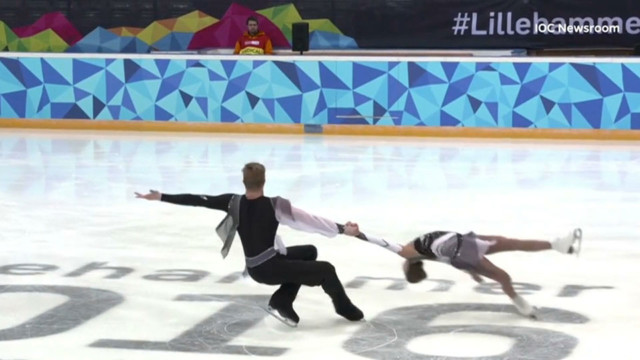What does it take to be an Olympic-level athlete? Beyond the brawn, it’s mental might.
CGTN’s Frances Kuo explains.
Johns Hopkins University in Baltimore, Maryland is located thousands of kilometers from the PyeongChang Winter Olympics. Yet scientists there have made their way deep inside Olympians’ heads.
One of them is Vikram Chib, JHU Assistant Professor of Biomedical Engineering.
He studies how incentives affect performance. And those incentives are especially big on the Olympic stage.
“They might be social, because you’re playing for your country,” Chib said. “They can also be monetary, because the Olympic Federation does pay depending on how you do.”
So, similar stakes and years of training put Olympians on the relatively same playing field.
Why then do some perform poorly under pressure? Chib points to a fear of failure, literally lodged deep inside the brain.
“That area encodes reward value, and it also encodes potential loss,” Chib explained.
The evidence is in brain scans of people in his studies who were presented with a different kind of incentive: $100 to win a video game.
“That worry about loss tends to corrupt your motion performance, corrupts the area of your brain responsible for moving your arms or legs,” said Chib.
The good news is that the concern about failing can be reframed, if you consciously set your mind to it.
“So, if I tell you ‘get ready for the loss, realize that you could lose,’ people tend to not be worried about losses when they’re doing these tasks,” Chib said.
Incentives aren’t the only things that can affect an Olympian’s performance. Take elite figure skaters. How are they able to do difficult jumps and spins that would literally make our head spin?
When we spin, our eyes move in an equal but opposite direction. But dizziness sets in when we stop moving, but our eyes keep going.
“What that does is give the brain a false sense of motion,” said Kathleen Cullen, JHU Professor of Biomedical Engineering.
However, elite athletes can rewire their brains by actually suppressing this feeling of disorientation, explains Cullen.
It’s developed by rigorous and repetitive training, allowing professional figure skaters, for example, to spin up to 400 rotations per minute.
What’s more, they have a sixth sense.
“We can watch these computations occurring in the order of milliseconds,” said Cullen.
It’s a complex sensory system allowing athletes to fix performances mid-routine like when skaters are doing jumps.
“Maybe you started off a little differently than you expected because the ice was a little big slippery or maybe your ankle is in a different position,” said Cullen. “What they can do is correct on the fly for these errors.”
It’s proof that the mind does work in mysterious ways, in this case, making the difference between winning and losing.
Norman O’Reilly discusses how China has fared at the Winter Games
For a look at how China fared at this year’s Winter Games, CGTN’s Elaine Reyes spoke with Norman O’Reilly, professor and head of the Sports Administration department at Ohio University’s College of Business.
 CGTN America
CGTN America

